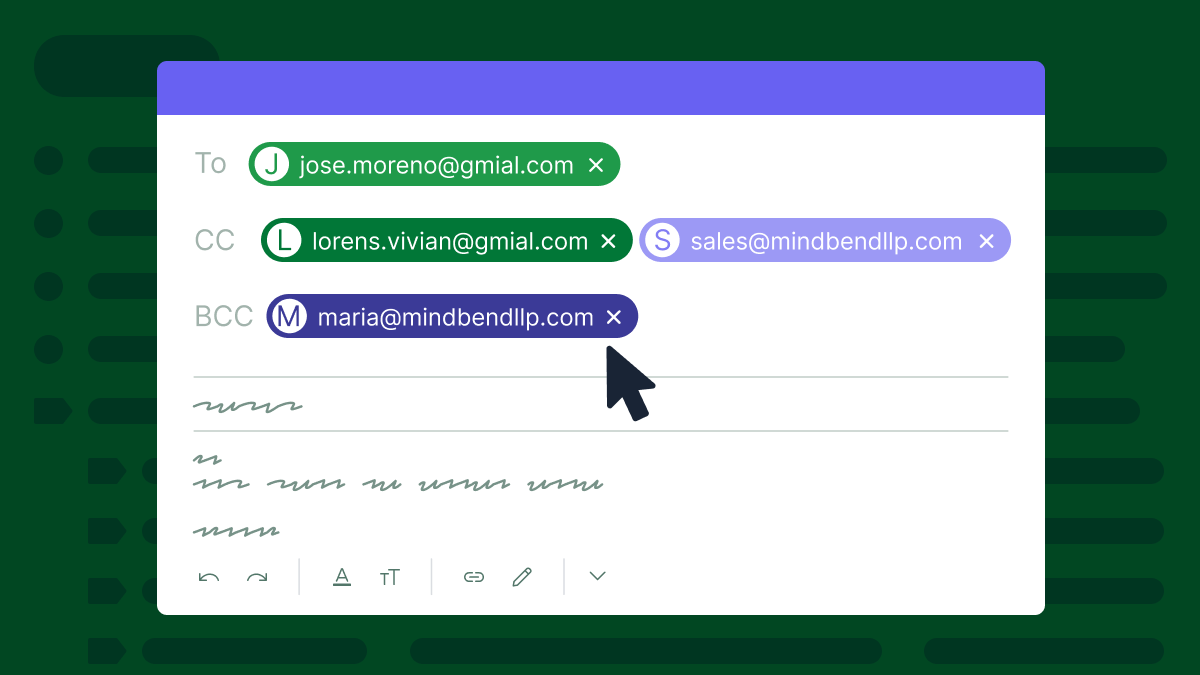Successful marketing relies on providing valuable content, such as blogs, newsletters, videos or whitepapers.
Each format plays a key role in increasing visibility, building credibility and converting potential leads into actual customers.
Tailored for beginners, this content marketing guide presents a meticulously crafted, step-by-step framework that even seasoned marketers can employ to refine and enhance their long-term content strategies.
What is content marketing?
Content marketing is a strategic approach to creating and sharing valuable, relevant information to attract and engage a specific audience. The goal isn’t to sell directly but to earn trust, improve brand recognition and guide potential customers toward a buying decision.
Content marketing prioritizes building lasting connections rather than using conventional advertising methods. Instead of promoting products, it provides valuable information, instructions or amusement that resonates with the audience’s desires and preferences.
Why content marketing matters
Content builds authority. A company that consistently publishes helpful or insightful material becomes a go-to source in its industry. That level of trust builds credibility and ultimately leads to higher conversions.
Content marketing continues to play a critical role in business growth. According to the Content Marketing Institute in 2023, 71% of B2B marketers say content marketing has become more important to their organization in the last year.
The growing emphasis reflects a shift in how businesses build trust, generate leads and nurture long-term customer relationships through consistent, valuable content.
Content also fuels digital visibility. Blog posts improve organic rankings, videos drive social media engagement, and whitepapers support lead generation efforts. A strong content foundation benefits every channel in digital marketing.
Key components of a content marketing strategy
A successful strategy begins with understanding the audience. Research their interests, challenges and intent. Use tools like Google Analytics, social listening platforms or customer surveys to uncover insights.
Afterwards, select the appropriate formats. Blog posts, instructional guides, success stories, visual representations and videos each have distinct purposes. Make your choices based on your objectives, your audience’s preferences and the resources available.
Distribution is equally important. A blog with no promotion will go unread. Share content via email, social media, search engines and partnerships. Amplify the best-performing pieces through paid ads or syndication.
Finally, set clear objectives. Define what success looks like, whether it’s increasing traffic, generating leads or improving customer retention. Clear key performance indicators (KPIs) ensure that content delivers results.
Setting goals for content marketing
Clear, actionable goals are essential for effective content marketing. Rather than vague aims such as increasing traffic, focus on measurable targets like growing organic sessions by a defined percentage within a set timeframe.
Clarity: Define exactly what needs to be accomplished. Objectives should be focused and leave no ambiguity about the expected outcome.
Actionable: Break down goals into smaller, manageable tasks that can be executed efficiently. This ensures that each step contributes directly to the broader objective and allows for progress tracking throughout the process.
Meaningful: Align content objectives with broader business outcomes. Goals should reflect the priorities of the organization –whether that’s expanding reach, improving engagement or supporting lead generation efforts.
Trackable: Use data tools like Google Analytics to monitor key performance indicators, such as organic traffic, bounce rates and session duration. Quantitative insights enable teams to evaluate success and adjust strategies with confidence.
Common types of content and when to use them
Different formats serve different purposes. Here are some common types and their best use cases:
Content type | Use case |
Ideal for SEO, thought leadership and answering common customer questions | |
Useful for showcasing results and building trust with prospective clients | |
Ebooks or whitepapers | Support lead generation and educate buyers at the consideration stage |
Help simplify complex topics and boost engagement on social media | |
Great for demonstrating products, explaining services or capturing attention quickly |
Select formats that align with audience preferences and match the campaign’s intended purpose. This ensures that content is both engaging and strategically effective.
The content production workflow
A strong workflow keeps production consistent and aligned with strategy. The following steps provide structure from idea to performance tracking:
Ideation: Begin by brainstorming content ideas based on keyword research, customer needs or seasonal trends. Reviewing competitor content and identifying gaps in existing resources can also help surface valuable topics.
Brief creation: Outline the angle, format, keywords and target audience. A well-structured brief keeps all contributors aligned and helps reduce revisions by clarifying expectations up front.
Production and review: Create the content according to the brief and ensure it meets quality standards. Before publishing, review for accuracy, tone of voice and consistency with brand messaging.
Publishing and monitoring: Publish content across selected platforms and track its performance using analytics tools. Monitor key metrics like engagement, traffic and conversions to identify what works and inform future improvements.
Tools like content calendars, project management platforms and AI writing assistants can help streamline each step and support consistent output.
Promoting content effectively
Publishing is only the first step – distribution is what ensures content reaches the right audience and drives results.
Start with organic channels. Use email newsletters to keep subscribers informed about new content and share blog posts, videos or infographics across social media platforms to increase visibility. Tailor your messaging to each channel’s format and audience expectations.
Search engine visibility also plays a crucial role. Optimize content by targeting relevant keywords, writing strong meta descriptions and using structured headings to improve discoverability in search results.
Strategic partnerships can expand reach further. Collaborate with influencers, industry experts or complementary brands to share content across new networks. Guest posts, co-branded assets or cross-promotions are effective ways to access a wider audience.
Paid distribution adds another layer. Use platforms like Google Ads or LinkedIn Sponsored Content to amplify high-performing or high-value pieces. These channels allow precise targeting by interest, industry or behavior.
Finally, maximize existing content by repurposing. Break long-form content into smaller assets –such as social media quotes, short videos or carousel posts – to increase engagement and extend its shelf life across multiple platforms.
Measuring performance and optimizing over time
Data plays a key role in refining a content strategy. Tracking content metrics such as pageviews and time on page helps evaluate how engaging the content is, while organic search traffic reveals how well it performs from an SEO perspective.
For social media marketing, social shares and comments provide insight into what resonates with the audience. Monitoring these interactions can guide future content decisions and highlight opportunities to better align with audience interests.
Connecting content efforts to leads generated or conversions assisted ensures the strategy drives measurable business outcomes. Use performance data to double down on effective formats, update underperforming assets and prioritize consistent, incremental improvement.
Tools that support content marketing
The right tools can streamline every stage of the content marketing process – from planning and production to distribution and performance tracking. Choosing platforms that fit your team’s workflow and skill set ensures greater efficiency and consistency.
For planning and collaboration, project management tools help organize content calendars, assign tasks and manage deadlines. SEO research platforms support topic discovery, keyword tracking and content optimization. Writing and editing tools improve clarity, grammar and tone.
Customer relationship management (CRM) platforms like Pipedrive also play a vital role in connecting content with audience data to guide distribution, automate follow-ups and measure impact across the customer journey.
Distribution tools enable teams to schedule content, manage social posts and track email campaigns. Together, these categories form the foundation of a repeatable and scalable workflow.
How Pipedrive can support your content strategy
An effective content strategy doesn’t operate in isolation. works best when integrated with tools that support lead tracking, outreach and performance measurement. Pipedrive offers features that help align content efforts with broader marketing and sales goals.
Campaign tracking and email automation tools in Pipedrive allow teams to monitor how leads engage with specific content and follow up based on real activity. These features ensure that blog posts, guides or newsletters aren’t just published but also guide prospects through the sales funnel.
By combining CRM insights with content performance data, Pipedrive helps prioritize topics that generate meaningful engagement. With its visual pipelines and easy-to-use automation features, connecting content creation with measurable business outcomes becomes more seamless.
Final thoughts
Content marketing is a long-term investment in brand visibility, credibility and customer trust. It requires a strategic foundation, consistent execution and regular refinement to stay aligned with business goals and audience needs.
Whether you’re just starting out or looking to improve your current approach, this content marketing guide offers a clear path forward. From defining goals and choosing the right formats to distributing and measuring performance, our goal is to provide a practical framework for success.
As the digital landscape continues to evolve, the ability to create and deliver valuable content will remain a defining factor in business growth. By following the steps in this content marketing guide, teams can build strategies that resonate, perform and scale.







